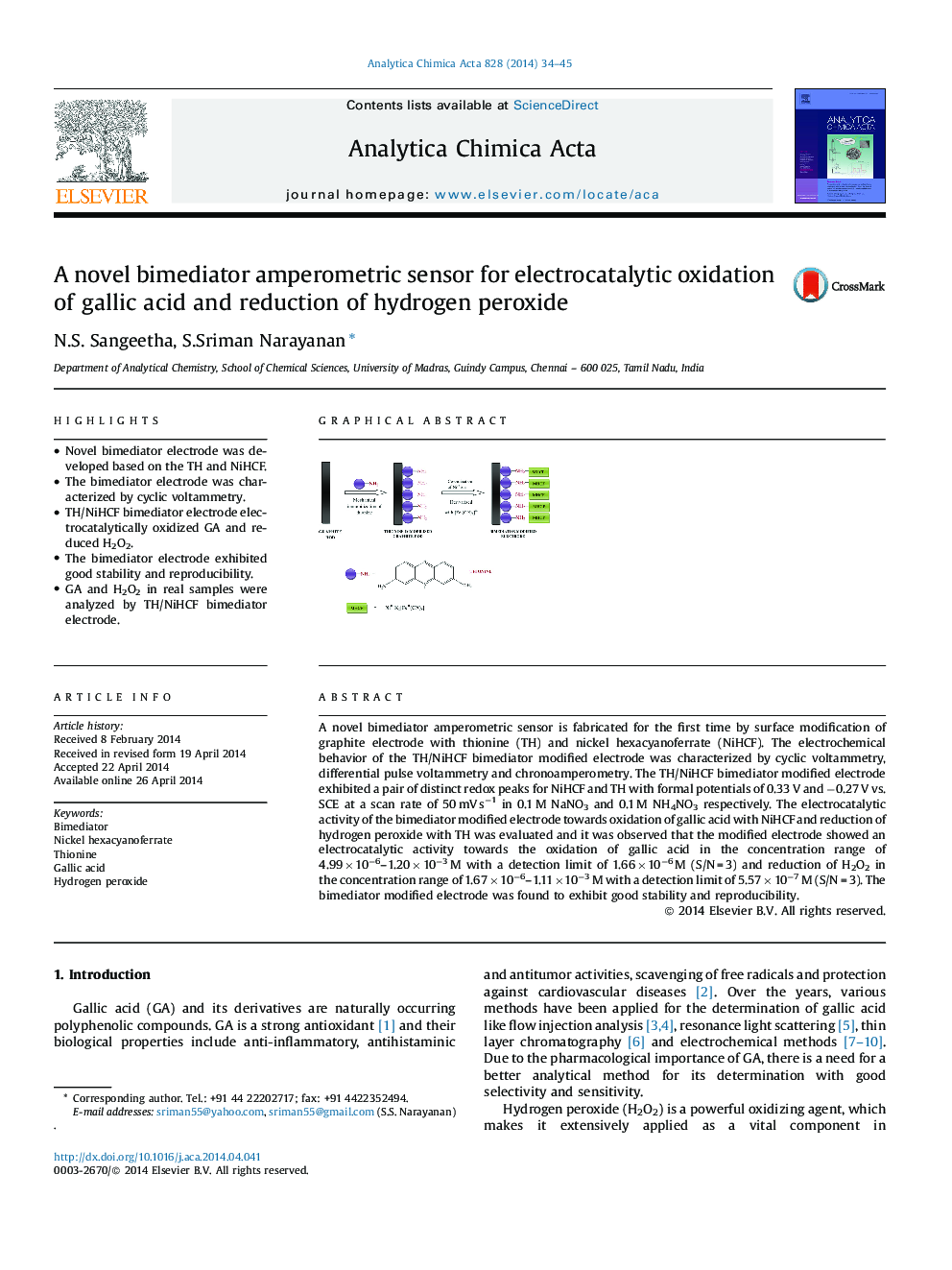| Article ID | Journal | Published Year | Pages | File Type |
|---|---|---|---|---|
| 1164710 | Analytica Chimica Acta | 2014 | 12 Pages |
•Novel bimediator electrode was developed based on the TH and NiHCF.•The bimediator electrode was characterized by cyclic voltammetry.•TH/NiHCF bimediator electrode electrocatalytically oxidized GA and reduced H2O2.•The bimediator electrode exhibited good stability and reproducibility.•GA and H2O2 in real samples were analyzed by TH/NiHCF bimediator electrode.
A novel bimediator amperometric sensor is fabricated for the first time by surface modification of graphite electrode with thionine (TH) and nickel hexacyanoferrate (NiHCF). The electrochemical behavior of the TH/NiHCF bimediator modified electrode was characterized by cyclic voltammetry, differential pulse voltammetry and chronoamperometry. The TH/NiHCF bimediator modified electrode exhibited a pair of distinct redox peaks for NiHCF and TH with formal potentials of 0.33 V and −0.27 V vs. SCE at a scan rate of 50 mV s−1 in 0.1 M NaNO3 and 0.1 M NH4NO3 respectively. The electrocatalytic activity of the bimediator modified electrode towards oxidation of gallic acid with NiHCF and reduction of hydrogen peroxide with TH was evaluated and it was observed that the modified electrode showed an electrocatalytic activity towards the oxidation of gallic acid in the concentration range of 4.99 × 10−6–1.20 × 10−3 M with a detection limit of 1.66 × 10−6 M (S/N = 3) and reduction of H2O2 in the concentration range of 1.67 × 10−6–1.11 × 10−3 M with a detection limit of 5.57 × 10−7 M (S/N = 3). The bimediator modified electrode was found to exhibit good stability and reproducibility.
Graphical abstractFigure optionsDownload full-size imageDownload as PowerPoint slide
